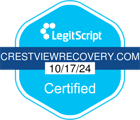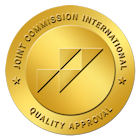Have you ever wondered what it feels like to overdose on fentanyl? You’ve probably heard horror stories about how dangerous synthetic opioids can be, even in tiny doses. Maybe you’re addicted to prescription painkillers or heroin, and your dealer just gave you some new pills that are supposedly extra strong. Or perhaps you’re simply curious about the effects of different drugs. Whatever the reason, fentanyl overdoses are no joke. Within minutes of taking too much, you’ll start to feel extremely tired and confused. Your breathing will become slower, and you may lose consciousness entirely. Without immediate medical attention, a fentanyl overdose can quickly become fatal. The good news is that overdosing can be reversed if you get emergency treatment right away. But the best way to avoid finding out what an overdose feels like is to steer clear of fentanyl in the first place.
Learn more about this drug here at Crestview Recovery, a Portland Recovery Rehab Center!
What Exactly Is Fentanyl?
Fentanyl is an extremely potent synthetic opioid, 50 to 100 times more powerful than morphine. Just a few milligrams can lead to an overdose and even death. Fentanyl is also commonly referred to by various street names, including Apace, China Girl, China Town, Dance Fever, Friend, Goodfellas, Great Bear, He-Man, Jackpot, King Ivory, Murder 8, Poison, and Tango & Cash.
Fentanyl was originally created as a potent analgesic intended for the management of pain in cancer patients and individuals suffering from chronic illnesses. Its effectiveness in providing relief during surgical procedures has also made it a valuable tool in the medical field. However, the alarming reality is that Fentanyl has emerged as a widely abused recreational drug recently. Classified as a Schedule II controlled substance due to its high possibility of addiction and misuse, Fentanyl has played a significant role in the ongoing opioid crisis. This crisis underscores the critical importance of raising awareness, implementing preventive measures, and providing comprehensive drug treatment to combat this pressing public health issue.
Risk Factors for a Fentanyl Overdose
A fentanyl overdose can happen to anyone, even if you only use it occasionally or have a high tolerance. The risks are real, so know the signs and get help immediately.
- Using alone. If no one’s around when you take fentanyl, no one can call for emergency responders if you overdose. Always use it with others, and call 911 right away if someone ODs.
- Mixing drugs. Fentanyl is often combined with heroin, cocaine, meth, and other drugs. Mixing substances multiplies the risks and makes overdosing much more likely.
- Existing health issues. Certain conditions like sleep apnea, COPD, and liver or kidney disease can make the effects of fentanyl more dangerous and overdose more probable.
- Changing your tolerance. If you’ve been off fentanyl for a while, your tolerance will decrease. Starting back at the same dose you were on could easily lead to an OD.
- Varying potency. The potency and purity of illicit fentanyl can vary, and even small changes could mean the difference between getting high and overdosing. You never know exactly what’s in that bag or pill.
An overdose slows and eventually stops your breathing. Signs include extreme drowsiness, confusion, pinpoint pupils, a limp body, and blue-tinged skin. Fentanyl addiction is tough to beat, but recovery is absolutely possible. Reach out for help right away. Remember, every second counts!

Contact Crestview Recovery today to begin your journey towards overcoming substance use
If you or a loved one is struggling with substance use, reaching out for help can be the first step towards recovery. Take the first step now.
What are the Signs of a Fentanyl Overdose?
Knowing the common symptoms of a fentanyl overdose can literally be lifesaving. Unfortunately, since fentanyl is so potent, the signs may come on quickly. The main symptoms to watch for include:
- Excessive drowsiness or loss of consciousness. A person may be unresponsive or pass out.
- Slow, shallow breathing, or no breathing at all. Breathing may slow to less than one breath every 5 seconds.
- Pale, clammy skin. Their skin may take on a bluish tint around the lips and nails due to lack of oxygen.
- Constricted or pinpoint pupils. Their pupils become very small, sometimes the size of a pinhead.
- Choking or gurgling sounds. As their breathing slows, fluid may build up in the lungs and throat.
- Limp body. Their bodies become very relaxed and limp due to the effects of the opioid.
If you notice any of these symptoms after using fentanyl, call 911 right away. A fentanyl overdose is a medical emergency that can quickly turn fatal if not treated. While waiting for emergency responders to arrive, there are some steps you can take:
- Check to see if the person is still breathing. If not, perform rescue breathing using a face mask or pocket mask.
- Check for a pulse. Begin chest compressions if there is no pulse.
- Administer naloxone if available. Naloxone is an opioid antagonist that can reverse an overdose.
- Keep the person warm. In case they vomit, place them in the recovery position on their side.
- Remain with the person until emergency responders arrive.
Can a Fentanyl Overdose be Treated?
Yes, treating a fentanyl overdose is indeed challenging, but, in many cases, it can be reversed successfully if immediate action is taken. Here’s how:
Administer Naloxone
The most important step in treating a fentanyl overdose is to administer the opioid antagonist naloxone (Narcan) as soon as possible. Naloxone works by blocking opioid receptors in the brain that fentanyl attaches to, reversing the effects of an overdose.
- Administer naloxone by nasal spray or injection.
- Repeat doses of naloxone every 2-3 minutes until emergency responders arrive.
Provide rescue breathing
After giving naloxone, provide rescue breathing, or CPR if the person is unresponsive or not breathing. Tilt the head back, lift the chin, and pinch the nose shut. Give one breath every 5 seconds until emergency help arrives.
Get medical help
Even after naloxone is given, the effects of fentanyl may return. Always get immediate medical help by calling 911 when someone has overdosed on fentanyl. They will need to be monitored, given additional Naloxone if needed, and may require hospitalization.
Supportive care
Once the person’s vital signs are stabilized, healthcare providers will provide supportive care. This may include monitoring the person’s heart rate, blood pressure, and oxygen levels. They may also administer fluids intravenously and use other medications if necessary.
Observation and further treatment
After the initial treatment, the person will likely be observed for a period of time to ensure their condition remains stable. In severe cases, they may be admitted to the intensive care unit (ICU) for close monitoring and additional interventions.
It is important to note that naloxone can rapidly reverse the effects of fentanyl and save lives, but it may wear off before the effects of fentanyl completely subside. Therefore, it is crucial for individuals who have received naloxone to seek further medical attention and evaluation, even if they appear to have improved.
Fentanyl Addiction Treatment
Fentanyl addiction is a serious and complex issue that requires professional treatment and support. Here are some common approaches and components of fentanyl addiction treatment:
Detox and Withdrawal
Detoxing from fentanyl is the first step in recovering from an addiction to the substance. This means stopping the use of fentanyl so your body can eliminate it from your system. Fentanyl withdrawal symptoms can be severe and may include:
- Nausea and vomiting
- Muscle aches and pains
- Anxiety and irritability
- Insomnia and restlessnessv
- Diarrhea and stomach cramps
Detoxing at a medical facility is recommended due to risks like dehydration. Doctors can provide medications and IV fluids to help ease withdrawal symptoms.
Residential or Outpatient Rehab
Following detox, entering a rehabilitation program is critical for recovery. Residential rehab provides intensive treatment in a structured, live-in environment, while outpatient rehab allows you to live at home while attending treatment. Both options provide:
- Individual and group counseling
- Treatment for depression and other co-occurring mental health issues
- Training in life skills and coping strategies
- Relapse prevention education
- Aftercare planning for ongoing recovery
The length of stay depends on the severity of your addiction and can range from 30 to 90 days in a residential program. Outpatient treatment is more flexible but typically requires 9-12 months.
Residential or Outpatient Rehab
Following detox, entering a rehabilitation program is critical for recovery. Residential rehab provides intensive treatment in a structured, live-in environment, while outpatient rehab allows you to live at home while attending treatment. Both options provide:
- Individual and group counseling
- Treatment for depression and other co-occurring mental health issues
- Training in life skills and coping strategies
- Relapse prevention education
- Aftercare planning for ongoing recovery
The length of stay depends on the severity of your addiction and can range from 30 to 90 days in a residential program. Outpatient treatment is more flexible but typically requires 9-12 months.
Behavioral Therapies
Various evidence-based behavioral therapies are effective in treating fentanyl addiction.
- Cognitive-behavioral therapy (CBT) helps individuals identify and change negative thought patterns and behaviors associated with drug use.
- Contingency management involves providing rewards for drug-free urine tests or meeting treatment goals.
- Motivational interviewing aims to enhance an individual’s motivation to quit using drugs and make positive changes in their life.
Dual Diagnosis Treatment
Many individuals with fentanyl addiction may have co-occurring mental health disorders, such as depression, anxiety, or post-traumatic stress disorder (PTSD). Dual diagnosis treatment addresses both the addiction and the underlying mental health conditions through integrated care. It ensures that both aspects are treated simultaneously for optimal recovery outcomes.
Ongoing Recovery
Fentanyl addiction recovery takes a lifetime of work. To avoid relapse, ongoing recovery steps or aftercare planning are needed, such as:
- Continued counseling and therapy
- Making lifestyle changes like avoiding triggers and risky situations
- Building a strong support network of family and friends
- Finding new hobbies and social activities that don’t involve drug use
- Practicing self-care through exercise, meditation, and mindfulness
You can successfully quit using fentanyl for good if you’re devoted to your recovery and make it a daily priority. Though the road is long, freedom from addiction is possible by taking things one day at a time.
Get Help With Fentanyl Addiction at Crestview Recovery!
If you or someone you know is struggling with fentanyl addiction, Crestview Recovery is here to provide comprehensive and compassionate help. We understand the unique challenges of fentanyl addiction and offer specialized treatment programs tailored to meet your individual needs. Our experienced and caring team of professionals is dedicated to guiding you through every step of your recovery journey. Don’t wait any longer—contact us today
and take the first step toward overcoming fentanyl addiction!

































